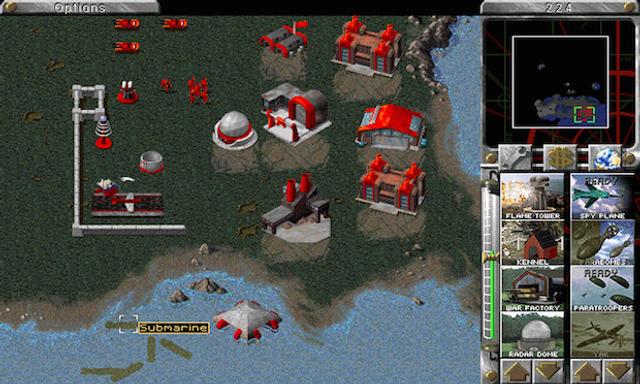For a brief, probably too brief period in the late '90s and early '00s, real-time strategy games were everywhere. Everywhere.
Titles like Command & Conquer: Red Alert, Starcraft, Civilisation and Worms! gained huge popularity with players and then, all of a sudden, they vanished from the popular consciousness.
The surge in popularity can be traced back to the advent of PC gaming, specifically Westwood Studios' output during the '90s. The first Command & Conquer was released back in 1995 and was met with almost instant critical and commercial success. The game became an overnight sensation and was listed in the Guinness Book of World Records for selling more than 10 million copies worldwide.
A console port was attempted, but was met with lacklustre sales and even more tepid critical response. The game simply didn't translate to a controller; you had to have a mouse and a keyboard to work it. Given that this was 1995 and Windows 95 was making computers increasingly accessible to the average user, it's easy to see how it became so popular.
A sequel was rushed into production and what came out was perhaps the most well-known PC game of the '90s - Command & Conquer: Red Alert. What made Red Alert so thrilling was that it could run on almost any consumer computer bought, it didn't need a huge amount of space to run and it was relatively easy to pick up. You simply pointed at something, clicked and you either had a War Factory crapping out tanks or you blew up a group of soldiers with an A-Bomb. It was instinctive, easy to play and highly addictive. Everyone was hooked.
Starcraft was the next big chapter in strategy games. Released in 1998, it raised the bar for strategy games. As well as having clearly defined factions which players could choose from, there was a compelling single-player story as well as a vastly improved multiplayer experience that took on a life of its own. The game became so popular in South Korea that live games between players were televised, with teams of players earning sponsorship deals.

By 2002, games like Star Wars: Empire At War, Age of Empires and Warcraft III were working with better graphics, better multiplayer and more detailed than anything that had come before. However, the rise of console gaming with more advanced graphics meant that PC gaming was becoming less accessible to casual players. Most developers and studios had given up on trying to make real-time strategy games for the console market, instead focusing entirely on the PC market.
There have been some titles since then have attempted to restart the genre, including Supreme Commander and the wildly successful StarCraft II. However, the genre appears to have fallen out of favour with PC players, save for the most obsessive and skilled players. Some cited the fact that the genre, as a whole, was one-note. Others said that the multiplayer experience had too much of a sharp learning curve, meaning that casual players simply couldn't compete with more experienced ones.
Since the advent of the iPhone and Android, indie developers have been experimenting with bringing real-time strategy back with mobile gaming. Sadly, the results haven't been as successful and many believe they pale in comparison to what came before.








































































